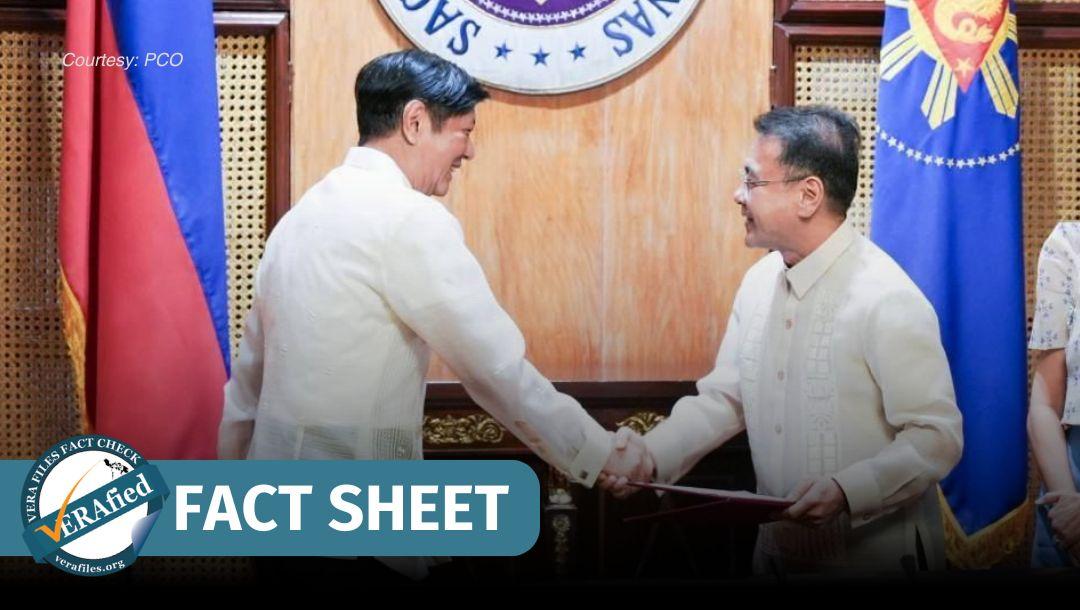One hundred forty three sites in Luzon have been put up to memorialize the Marcos family, according to a study by the University of the Philippines (UP Third World Studies Center (TWSC).
“Yung gusto naming sabihin: these [sites] exist, ito’y pinupuntahan ng mga bata, ito’y pinaghahantayan ng mga tao habang sila’y naghihintay ng jeep o ng tricycle, ito’y dinadaaan-daanan natin everyday,” UP TWSC Researcher Larah Del Mundo said.
(What we want to say is: these sites exist, children visit these, people use these areas as waiting sheds while waiting for a jeep or tricycle, we pass by it every day).

The study, a culmination of four months of field work, recorded the location and purpose behind historical markers, monuments, museums, and other structures related to or named after the Marcoses.
It was presented by the UP TWSC in an event titled “UP ?Marcos at Iba Pang Kahunghangan: Isang Malayang Talakayan sa Ika-51 Taon Matapos Ipataw ang Diktadurang Marcos” on September 28 at the Palma Hall in UP Diliman.
“Para sa aming mga researcher, tignan natin yung mga fine print: ano ba ‘yung sinasabi ng mga markers na dini-discuss yung mga war exploits ni Marcos? Tama ba ito? Hindi ba ito tama,” Del Mundo explained.
(For us researchers, we look at the fine print: what do these markers discussing the war exploits of Marcos say? Is it true? Is it not true?)
Where in Luzon?
Among the findings of the research is that 65% of the sites dedicated to the Marcoses are in the Ilocos Region and the National Capital Region (NCR). Many of these were set up after the 1986 EDSA revolt, according to Del Mundo.
“These are to be expected kasi balwarte yung Ilocos ng mga Marcos at ‘yung NCR naman (because Ilocos is the bailiwick of the Marcoses and NCR) has been and until today [is] the seat of power ,” Del Mundo said.
Dedicated Marcos-themed areas are clustered in specific areas in Ilocos Norte. In the NCR, such sites are scattered along Taguig, Marikina, Quezon City, and Intramuros in Manila.

Why a site to memorialize Marcos?
Sites dedicated to the Marcoses promoted fake exploits or heroism of Marcos Sr., depicted the late president as a hero and a great statesman, chronicled the victory of Ferdinand Marcos Jr. in the 2022 elections, or showed cult worship and praise to the Marcos family, researchers found.
Several shrines in Mount Samat in Pilar, Bataan and a marker in San Esteban, Ilocos Sur falsely claimed that Marcos was a war hero. The UP TWSC has debunked such claims.
In Ilocos, the likeness of Marcos is also placed near the statues of heroes like Gen. Antonio Luna, Salarogo Ambaristo of the 1807 Basi Revolt, and Valentin Diaz of Katipunan.
“Dahil katabi ni Marcos ang mga bayani, bayani na rin ang turing kay Marcos (Because Marcos was placed alongside heroes, Marcos was also considered a hero,” Del Mundo said.
Another site in Cabaroguis, Quirino revealed the existence of a cult founded by former colonel Bernabe Abella as part of psychological war tactics against communist rebels. A painting found in the Basilica of Our Lady of Charity in Agoo, La Union depicts Imelda Marcos as the Virgin Mary.
Meanwhile, the Teus Museum in Malacanang commemorates the vice-presidential defeat of President Ferdinand Marcos Jr in 2016 and eventual victory in 2022.

“Nagsimula siya sa diumano’y pagnanakaw kay Bongbong Marcos sa pagkapanalo niya sa vice presidency, at mag-e-end on a very glorious note sa isang museum kung saan pwede kang bumili ng campaign paraphernalia na dati’y pinapamigay lang,” Del Mundo said.
(It started with the snatching of the vice-presidential position from [Ferdinand] Bongbong Marcos [Jr.], ending on a very glorious note in a museum where you can buy election campaign paraphernalia previously given for free).
Other photos show former Ilocos Sur governors Carmeling Crisologo and Chavit Singson posing alongside the Marcoses as a depiction of their affiliation with the political family.

“Para sa kanila, utang na nila sa mga Marcoses ang kanilang pananatili sa kapangyarihan. Hanggang ngayon, pinaghuhugutan pa rin nila ng prestige ang kanilang association with the Marcoses,” Del Mundo said.
(For them, they owe the Marcoses their stay in power. Until now, they still get prestige from their association with the Marcoses.)
Majority of the 143 sites honor the late dictator Ferdinand Marcos Sr. Others commemorate him and wife Imelda Marcos, the Marcos family, or Marcos Sr.’s parents, Mariano and Josefa Marcos.
“Hindi malinaw kung anong kabayanihan ang ginawa ng tatay at nanay ni Ferdinand Marcos Sr. pero madalas pinapangalan sa kanila ang mga sites or mga memorials na may kinalaman sa mga Marcos,” Del Mundo said.
(It’s not clear what the heroic deeds of Ferdinand Marcos Sr.’s father and mother were, but sites or memorials related to the Marcoses are named after them.)
The study, funded by the UP Office of the Initiative for Cultural Affairs (OICA), is still ongoing.
“Pati kami nagugulat na [maraming] sites sa Luzon. Nandoon pa lang tayo sa point na nagre-recon pa lang tayo. Wala pa tayo sa point na ano ba ang pwede nating gawin,” Del Mundo concluded.
(Even we are surprised about the abundance of sites in Luzon. We’re now just in the stage of reconnaissance. We’re not yet at the point of [deciding] what we should do).





